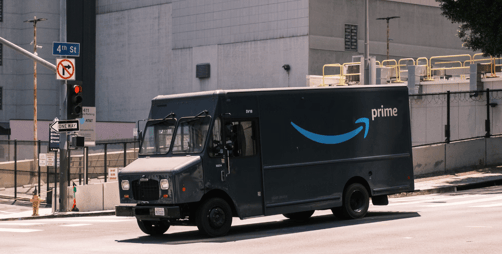This is the fourth installation in a four-part series. Part 1: What You Need to Know Before Selling on Amazon | Part 2: The 7 Steps for an Effective Amazon Seller Account | Part 3: The Importance of Amazon as a Search Engine
For a first-time seller, the Amazon marketplace can be intimidating and confusing. What are the fees you should be expecting, how much should you invest in advertising, what levers should you pull along the way, and how will those impact your margin? These are the questions that keep Amazon sellers up at night.
The good news is, selling on Amazon doesn't have to break the bank, and it doesn't have to be a painful process if you know the right way to get started and how to maintain your account.
Seller fees depend on the type of Amazon account you have and the type of products you are selling. However, you also need to factor in the fulfillment and promotional costs that will be critical for accelerating your product growth towards the flywheel effect.

Breaking Down Different Amazon Accounts
As a new business on Amazon, you will first have to determine which account type best suits your business.
There are two main types of Amazon accounts: Seller Central and Vendor Central. A seller is the most common type of account in the marketplace and is an easier place for small businesses and entrepreneurs to get started. Seller Central accounts typically have more flexibility for individual sellers and can start small while being able to scale up as needed.
Seller accounts branch off into individual and professional accounts. Individual accounts pay $0.99 per product sold plus seller fees based on the product category, and professional accounts pay $39.99 per month plus selling fees.
So right off the bat, you can see that if you plan to make more than 40 sales a month, a professional account is probably the better fit.
To get an estimate of seller fees, Amazon can show you which option is best for you using their website calculator.
To get access to Vendor Central, Amazon must directly invite you to participate on the platform, and from that point, you'll enter into negotiations to finalize details of the agreement. These types of accounts are typically larger and used by established brands that manufacture their products like Apple, Channellock, or Beats.
The number one advantage of Vendor Central accounts is that they typically carry the Prime badge or the “Ships by Amazon” designation. This status carries a lot of weight with Amazon shoppers, especially Amazon Prime members who are looking to take advantage of their usual free, two-day shipping opportunity and Amazon-backed customer support.
How Will Your Products Be Fulfilled?
Fulfillment options are open to all Seller Central accounts and vary by how companies want to balance the responsibilities between themselves and Amazon. Vendor Central accounts are mostly fulfilled by Amazon to cover all the logistics in their usual high volume of orders. Essentially, fulfillment is broken down into three different options:
- FBA (Fulfilled by Amazon)
- FBM (Fulfilled by Merchant)
- SFP (Seller Fulfilled Prime)
FBA is the most expensive type of fulfillment but covers all logistics. Products are simply sent to Amazon warehouses and are taken care of in the shipping process along with customer service. The only responsibilities of the seller are to keep their Amazon inventory stocked and manage their product listings.
FBM puts all of the fulfillment responsibilities on the merchant. They must store the product, pick and ship within their specified time frame, and manage all of their customer service. FBM is cheaper than FBA in terms of Amazon fees, but as a seller, you must have your own logistics and planning systems set in place.
SFP is a hybrid of FBA and FBM. Sellers must match the logistics and fulfillment standards set by Amazon, but must do so on their own. It is essentially the same as FBM, but accounts are allowed to display the Prime badge.
However, Amazon standards can be very difficult to achieve, and failure to do so after making the commitment can quickly result in account suspension. Therefore, it is critical that you have an air-tight plan in place before choosing the SFP option.
Estimating Your Amazon Costs
It can be difficult to break down exactly what you are going to spend with all of these variables in place. In the end, it boils down to your account type, what you plan on selling, and how much you sell. Accounting for the seller fees will get you started on Amazon but investing in advertising and marketing will take it one step further.
This may all seem like a lot of cash output, but does spending more money equal more success in the marketplace? The answer can go both ways.
Amazon has an abundance of opportunities for your business to grow, and picking the best seller and fulfillment options will help you win on Amazon.
Let's win on Amazon together.

.jpg?width=1500&length=1500&name=Amazon-Box-Sales-Factory-Blue%20(2).jpg)
